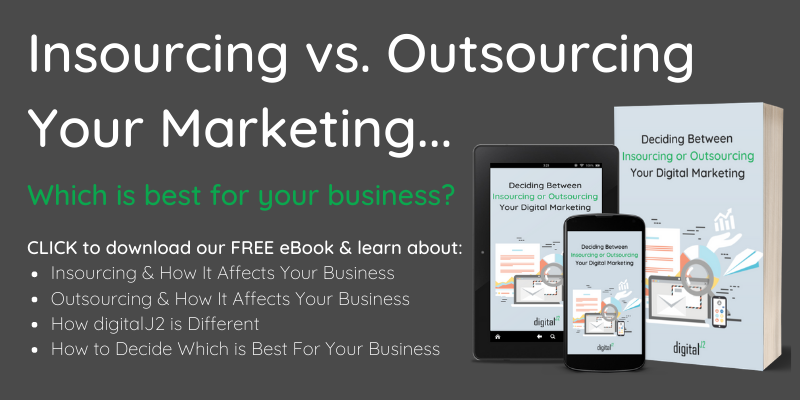 As marketers, we’ve grown accustomed to researching basic demographics like age and gender, digging into past and present data to make upcoming campaign decisions, and using our analytical findings to send the right email to the right contacts at the right time.
As marketers, we’ve grown accustomed to researching basic demographics like age and gender, digging into past and present data to make upcoming campaign decisions, and using our analytical findings to send the right email to the right contacts at the right time. Marketing to different generations like Baby Boomers, Generation X, Millennials, and Generation Z can assist with reaching your target audience on a deeper level.
So, instead of sending a Baby Boomer a Facebook Ad they’ll most likely consider spam, you’re engaging them with a brief, well-written article.
You’ll be more in touch with the personality and habits of your audience when you take the extra step to segment based on your target generation.

What is Generational Marketing?
Generational marketing uses segmentation to market to a specific generation of people. This means, content is tailored to age groups and dials in on the characteristics that distinguish each group.
Who Are The Six Living Generations?
Before we can produce effective marketing to different generations, we need to understand the basic characteristics of the six living generations.
1. GI Generation
Also known as the “Greatest Generation,” this cohort was born between 1901 to 1924 and were often born too late to serve in World War I; however, they experienced the Great Depression and World War II. This generation achieved the single biggest gain in education in U.S. history, but their knowledge is lacking when it comes to digital media.
2. Silents
This generation was born between 1927 to 1945. This group came of age after World War II and silently kept their heads down and joined the booming economy after school. Like the GI Generation, silents are conservative and would rather spend their time reading newspapers than browsing the internet.
3. Baby Boomers
Here’s where the embracing of modern technology begins. Baby boomers were born between 1946 and 1964. This group still enjoys listening to and leaving voicemails, but also likes learning how to use technology from their younger counterparts.
4. Generation X
This generation is referred to as the bridge between Baby Boomers and Millennials—leaving this group on the smaller side. They were born between 1964 and 1985 and have witnessed the takeover of TV. They are embracing online marketing by becoming more social media-savvy than their predecessors.
5. Millennials
This generation now outnumbers Baby Boomers and has taken over the workforce. Millenials were born between 1981 and 1999. This group started working when the economy crashed, resulting in the biggest generation of entrepreneurs. Their buying power is nearly 200 billion and they are likely to purchase online with referrals and positive online reviews.
6. Generation Z
This generation is becoming the new focus of generational marketing. This cohort was born from 2000 onwards and these technology natives are growing. This group already knows technology and defines a more diverse generation.
The Four Biggest Marketing Trends For Each Generation
There are generations that you’ll never reach online, like the GI Generation. On the other hand, generations like Baby Boomers have become more digitally savvy by obtaining help from younger generations. Understanding the aspects of each generation will shape the way you market to each group.
We’ll narrow our focus to generations that have a digital footprint.
1. Baby Boomer Digital Trends
According to Pew, Baby Boomers (ages 50 to 64) use Facebook more than Instagram or LinkedIn. However, their use of Facebook is more often linked to staying in contact with friends and family.
So, they won’t be as perceptive to Facebook Ads.
This generation relies more on television, watching approximately 50 hours of TV per week. They also consume 97.4% more global news than millennials and offer some serious brand loyalty. If a company changes their product, this group will know about it. Baby Boomers have a lot of buying power and are willing to spend because they’re either in retirement or very close to retiring.
These important trends tell us how we’re more likely to reach Baby Boomers. So, you’re already seeing how important marketing to different generations is.
2. Generation X Digital Trends
Generation X loves to adopt new technologies, but they are not digital natives by any means. For a classic Gen-Xer, understanding device usage and privacy concerns are at the top of the list.
According to Nielsen, Generation X (ages 35 to 39) is just as likely to use old media as they are digital devices. While this generation certainly loves to be online, they are increasingly wary of digital advertising. They largely use Facebook as a cohort, with less than half of them using Instagram on average and even fewer populating Twitter and Instagram.
However, there is a silver lining: 85% of Gen-Xers use a smartphone.
These insights should guide how you target this age demographic.
3. Millennial Digital Trends
It should come as no surprise that millennials lead technology adoption rates over past cohorts. Ninety-three percent of millennials (ages 23 to 38) own a smartphone, with 86% of those polled in a recent Pew study use social media.
Facebook continues to hold sway over this generation, with 84% of millennials reporting that they still use Facebook. While 100% of millennials use the internet according to the study, a staggering 19% only access it via their smartphone, which is a dramatic difference when compared to previous generations.
The message here is simple: target smartphone users through Facebook to optimize this cohort.
4. Generation Z Trends
The members of this cohort are digital natives, meaning “a person born or brought up during the age of digital technology and therefore familiar with computers and the internet from an early age.” This population represents the largest share of the consumer populations.
Generation Z are those born after 2000, making them the youngest cohort by far (the oldest Gen-Zer would be 23). This generation grew up with technology, so device adoption is second nature to them. As such, you have to be precise when marketing to them; otherwise, you’ll lose your opportunity.

When polled, 58% of Gen-Zers reported checking their email multiple times per day; interestingly, most reported liking to be contacted multiple times per week by a brand they are invested in. Email marketing offers a strong opportunity to connect with this generation.
Unsurprisingly, Gen-Zers prefer to interact with brands through social media, with a special emphasis placed on understanding a brand’s values and mission.
Whether you focus on email marketing or social media, the most important thing to remember is that this generation despises spam.
Keep Your Current Segmentation, But Consider Generational Targeting
Taking these generational trends and using them in your segmentation efforts isn’t as easy as picking an age group, categorizing them, and pressing “go” on your marketing campaign.
Do more in-depth research on the generation you want to focus on and get to know their unique personalities. That way, when you decide that marketing to different generations is a vital initiative for your marketing campaigns, you’ll be prepared to execute.
Once you’ve understood your target generation, and use the trends outlined to narrow where you’re meeting them, you’ll have a repeatable process for marketing to different generations in the future. Your audience will feel more understood and your nurturing efforts will yield deeper connections and insights.







